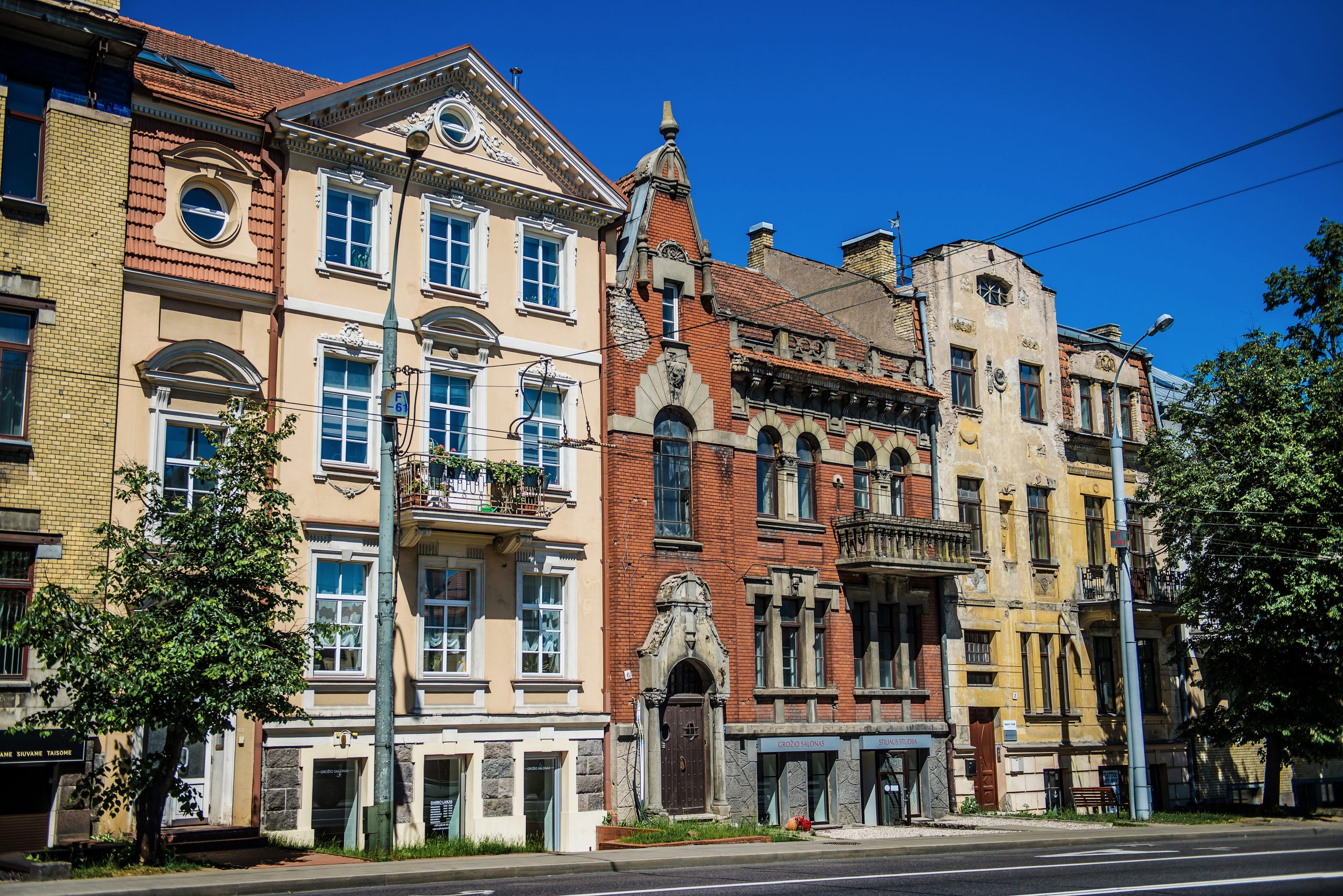Montvila Colony in Lukiškės
It would be hard to image the construction of residential semi-detached houses near Lukiškės Square today. However, the first semi-detached houses emerged specifically there.
At the beginning of the 20th century, construction of block houses – so called colonies – was an unseen and futuristic phenomenon. Famous public figure and philanthropist Juozapas Montvila, who designed 22 buildings on the wasteland, suggested a cost-effective method of construction without compromising the comfort and aesthetics of housing. Today, when passing by one of the most unique pearls of Vilnius architecture, you would think you are on the outskirts of London.
Residents of the Art Nouveau colony were mainly representatives of the intelligentsia and bank clerks. Housing was sold on instalment credit terms issued by the Bank of Land, the director of which was Juozapas Montvila. You could find lawyers, barristers, painters and traders here.
By the way, the buildings on J. Tumo-Vaižganto Street 5 and 7 were decorated with the coat of arms of nobility, as requested by their owners. Look up: the roof of the house on J. Savickio Street 11 has one of the nicest weathercocks in Vilnius – a winged hussar – which is reminiscent of the elite layer of the Rzeczpospolita (Commonwealth of Two Nations – Poland and Lithuania) military.
20th century: a century of modernisation and breakthroughs
- Vilnius City Central Power Station
- Public Transport in Vilnius
- Первая вильнюсская водонасосная станция
- The First Cinema in Vilnius
- The Great Seimas of Vilnius
- Halės Market
- Montvila Colony in Lukiškės
- Lukiškės Prison
- Scientist House
- The Right Bank of the Neris River – the New Centre
- The Vilnius Computing Machine Factory
- Television Tower
- Lazdynai
- NNaujamiestis Industrial Area

